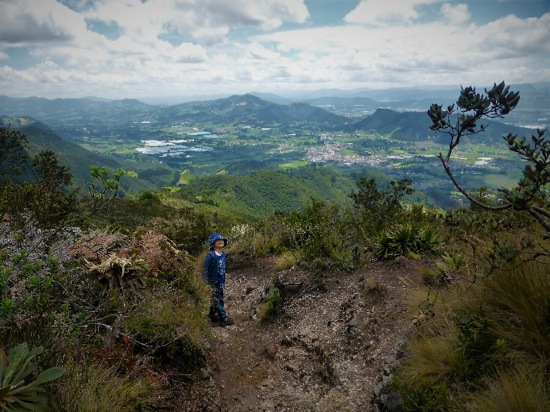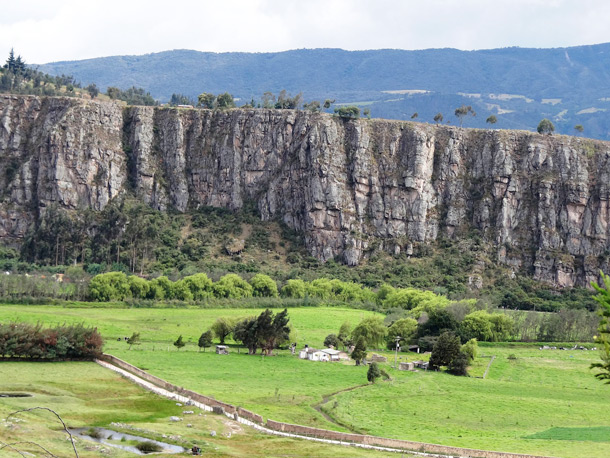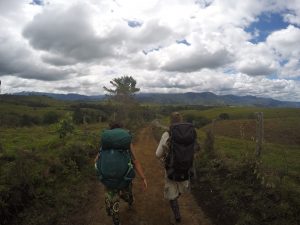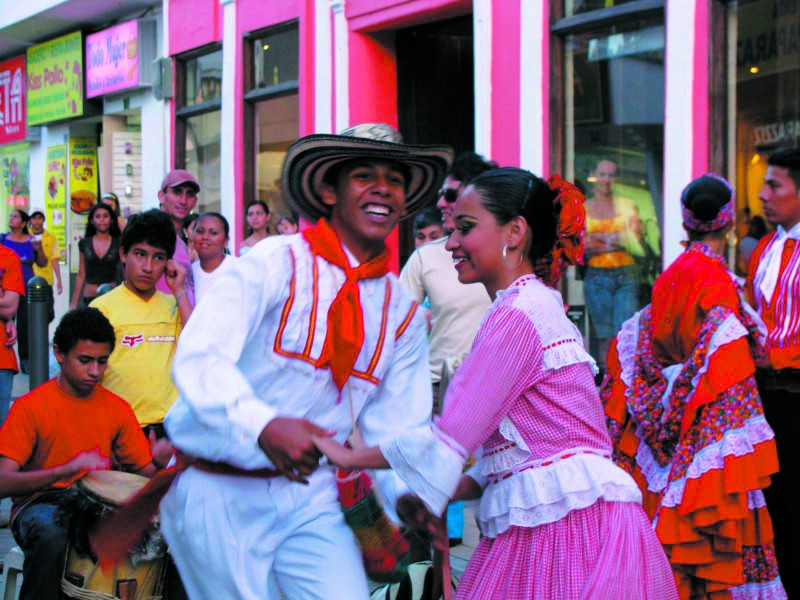
Fernando Botero’s sculptures can be seen around the world. Photo: Creative Commons
The Bogota Post takes a trip to The City of Eternal Spring and gets seduced by culture, innovation and spirit…
Colombia’s leading ladies, Bogota and Medellin, are not always the best of friends – as discussed by the Bogota Post’s new columnist, Adriaan Alsema in his first column.
And while Bogota’s ‘je-ne-sais-quoi’ has got under my skin as much as the dirt has got under my nails, I have to quietly admit I’m still a little seduced by Medellin’s charms.
The city, well known for its innovation, social transformation and ‘Eternal Spring’ -not forgetting the ‘paisa’-spirit, flower festival and bandeja paisa- has still not quite shaken the infamy that came with Escobar and the darker chapters of its history.
But visitors shouldn’t be put off by the city’s past. Nowadays, over a decade of radical social change imbibes Medellin with an energy and optimism that is as intoxicating as a night out in Parque Lleras.
Medellin’s story is one that cities around the world would like to emulate, making it a popular destination for politicians, academics, NGOs and urban planners, and leading it to act as host for events like the UN Habitat’s World Urban Forum earlier this year.
It is a story of foresight; of the decisions of successive mayors focusing on young people; of addressing inequality and investing in the four pillars of education, culture, technology and sport. It’s also a story of cooperation: with government, local government, businesses and communities working together to build a new society, and – perhaps most importantly – it’s a story of action: making those lofty visions concrete through the infrastructure of the city and a myriad of successful social projects.
For a visitor to the city, the most obvious aspects of this type of integrated urban planning are the metro, the metrocable, the green spaces and the plethora of libraries and galleries. (Check out the Biblioteca Espana, which can be reached by metrocable, situated in Santo Domingo – previously one of the most dangerous areas of the city.)
Surrounded by majestic mountains, it’s not surprising that Medellin has spawned world class cyclists – if you are feeling fit and adventurous, hire a bike and ask around for the best routes.
Sports fans will be impressed by the sheer numbers of sports activities taking place – from football and baseball in parks to sports facilities that are used by the whole community.
That’s not to say that Medellin doesn’t still have its problems. Once the murder capital of the world, the city now ranks 35th, with 38.06 murders per 100,000 people. And while there has been a dramatic turnaround, complex issues such as crime, drugs, poverty and gangs will not go away overnight – or even over a decade. Which mean that, as a visitor, all the usual precautions apply: keep your eyes open and don’t wave your valuables around in the street or walk down dark alleyways.
One thing you can be sure of is that the paisas will continue to address those issues with the pride, enthusiasm and optimism for which they are famed. In fact, their sheer determination to drag their city out of the mud has been the main contributing factor in Medellin’s dramatic rebirth.
So go out and talk to them! Ride the metrocable! Explore the city, enjoy the sunshine, take in some of the sights and embrace this magical city that is transforming itself in front of our very eyes.
Don’t miss:
 Metrocable/ Biblioteca Espana
Metrocable/ Biblioteca Espana
One of 10 libraries that were built as part of the cities’ urban transformation. Commissioned by mayor Sergio Fajardo in 2003, as part of his strategy to put the most beautiful buildings in the poorest areas, these three black rock-styled buildings tower over the city and contain a library, gallery, auditorium and a day care centre.
You can ride the metrocable up to the library, and then walk on to Arvi Park (or alternatively get back on the metrocable as it can be a fair walk).
Arvi Park
This huge nature reserve is home to over 700 species and covers around 16,000 hectares – that’s 15,000 football pitches!
The one downside is that the lack of clear signs and maps makes it difficult to explore the many trails without paying for the services of one of the numerous willing guides.
Parque Lleras
Jammed with trendy bars and clubs, this is Medellin’s equivalent of the Zona T. Start the night by joining locals in nearby Parque el Poblado – you’ll find street vendors with beer and aguardiente aplenty.
Barefoot Park (Parque de los Pies Descalzos)
As its name suggests, it’s a place where you can take off your shoes and join in the fun. Wade through various water pools, feel sand between your toes or stroll in the forest zone.
Museo de Antioquia
The Museo de Antioquia houses a vast selection of paintings, photographs, cartoons and sculptures reflecting Colombian art and society over the past two centuries, as well as objects from pre-hispanic cultures.
It is THE place to go if you want to learn more about Fernando Botero and Petro Nel Gomez (see Famous Faces). If you’re interested, it’s also worth visiting the Museo de Petro Nel Gomez.
Don’t miss the Botero Plaza next door to the museum. This open park contains 23 of his distinctive bronze sculptures. Plus, if you’re looking for bargains, take a stroll through the nearby streets for discounts galore.
Bandeja Paisa – with mondongo soup
Check out Mondongos, near Parque Lleras, which is said to sell the best Bandeja Paisa in town…. Don’t ask too closely about what is in mondongo soup, just make sure you try it.
Parque Explora
This ginormous red blocked building is an interactive science museum with more than 300 puzzles and games. Opposite the Botanical Gardens, it is also home to Explora Aquarium – South America’s largest freshwater aquarium – with more than 4,000 fish from 400 different species, this is a must for anyone with kids or a passing interest in nature.
Guatapé
Organise a day trip through your hotel or hostel to this brightly coloured town situated about 90km away. Most tours stop at a couple of the villages en-route and include a boat trip to the old village of Guatapé which is now under the man-made dam; when the water is low enough you can see the spire of the old church. It’s well worth climbing the 649 steps to the peak of El Peñón, even if you’re sporting a hangover and haven’t exercised for a while.
Famous Faces
 Fernando Botero
Fernando Botero
Next to Shakira and Gabo, Botero is arguably Colombia’s most famous artist. The octogenarian’s trademark exaggerated figures can be seen in cities around the world.
Mariana Pajón
Colombia’s golden girl brought home a gold medal in BMX from the London 2012 Olympic Games. More recently she took gold at the BMX World Championships in Rotterdam.
Pedro Nel Gómez
Best known for his murals, this engineer, painter and sculptor is famed for his part in starting the Colombian Muralist movement. He died aged 94 in 1984.
How to get there:
There are plenty of flights every day from Bogota to the main airport (José Maria Córdova) with Avianca , LAN and COPA. Flight time: 40 mins. The airport is about 28km from the city – take a taxi ($60,000 COP) or buseta ($6,000 COP). The bus takes about an hour through the mountains – be prepared to ask around a lot to find out where it leaves from.
Look out for flights to the domestic airport (Enrique Olaya Herrera), which is much closer to the city centre.
There are frequent buses from Bogota, which take about 9hrs (depending on traffic) and cost around $45,000-$60,000 COP.







